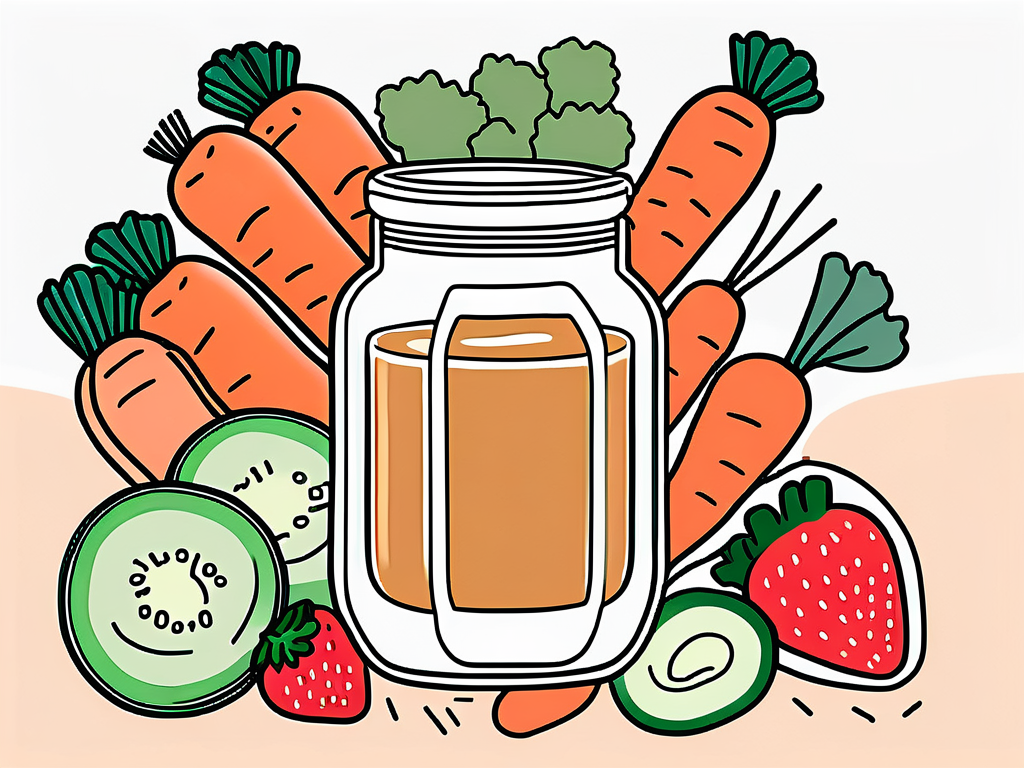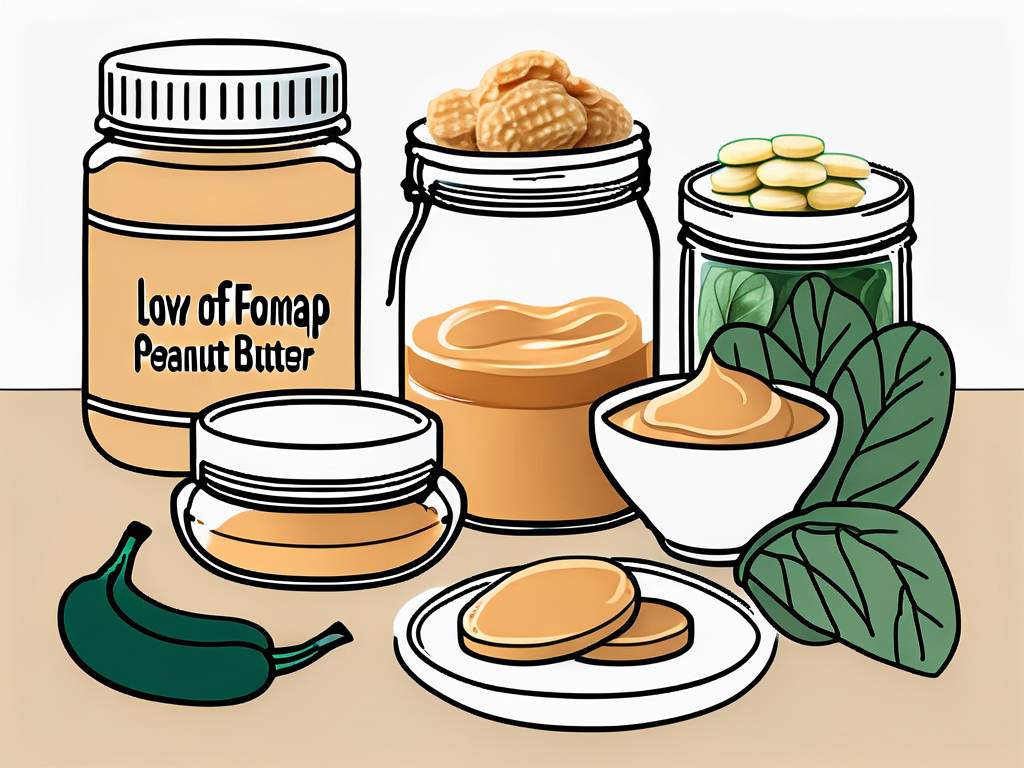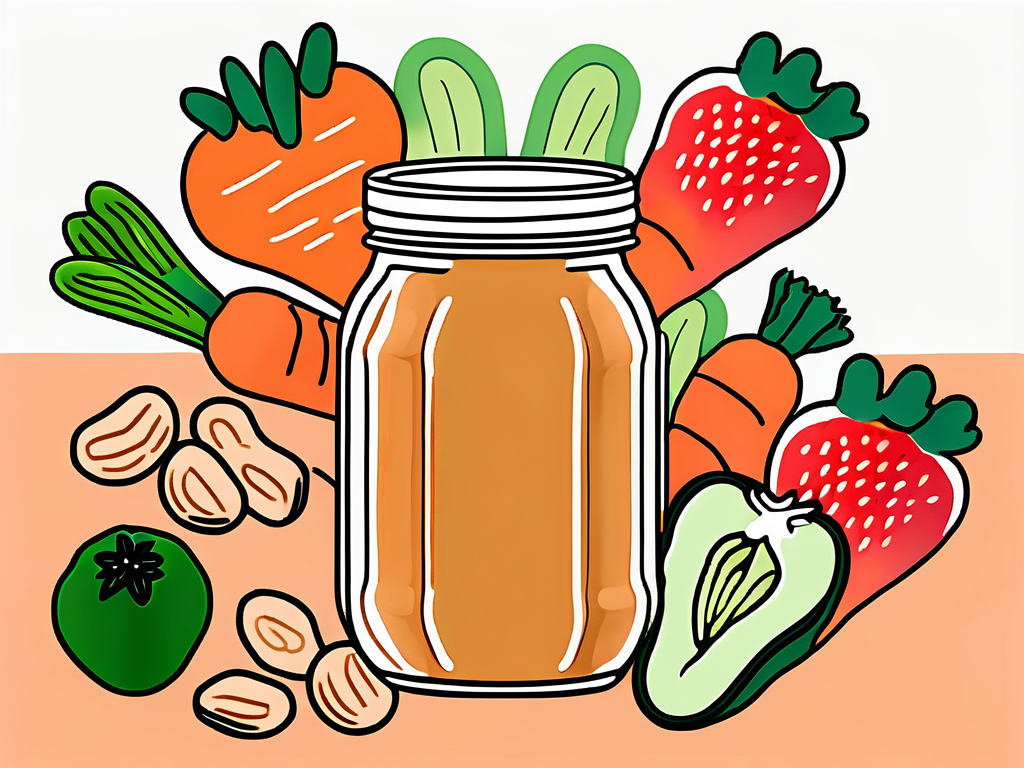Peanut butter is a popular spread enjoyed by many individuals. However, for those following a low FODMAP diet, there may be concerns about whether or not peanut butter is suitable. In this article, we will delve into the world of FODMAPs, explore the nutritional profile of peanut butter, discuss its relationship with FODMAPs, and provide tips for choosing and incorporating peanut butter into a low FODMAP diet.
Understanding FODMAPs
FODMAP is an acronym that stands for Fermentable Oligosaccharides, Disaccharides, Monosaccharides, and Polyols. These are short-chain carbohydrates that are poorly absorbed by the small intestine. Consequently, they can cause digestive symptoms such as bloating, gas, and diarrhoea in some individuals.

What are FODMAPs?
FODMAPs are found in a variety of foods, including fruits, vegetables, dairy products, grains, and sweeteners. Some common examples of FODMAPs include fructose, lactose, sorbitol, mannitol, and certain types of carbohydrates known as oligosaccharides.
It's important to note that the impact of FODMAPs on digestive health can vary from person to person. While some individuals may experience significant discomfort and bloating after consuming high FODMAP foods, others may tolerate them well without any adverse effects. Understanding your own tolerance to FODMAPs can help you make informed decisions about your diet and overall well-being.
Why are FODMAPs Important for Digestive Health?
FODMAPs can trigger symptoms in individuals with irritable bowel syndrome (IBS) or other digestive disorders. By following a low FODMAP diet, these individuals can reduce their intake of triggering foods and manage their symptoms more effectively.
Furthermore, it's worth mentioning that while some foods are naturally high in FODMAPs, others can be modified or prepared in a way that reduces their FODMAP content. For example, ripening bananas can increase their sugar content and lower their FODMAP levels, making them easier to digest for some individuals with sensitive stomachs. Exploring different cooking methods and food combinations can help individuals customize their diet to better suit their digestive needs.
The Nutritional Profile of Peanut Butter
Peanut butter is a delicious and nutritious food that is packed with essential nutrients. It is a good source of protein, healthy fats, vitamins, and minerals.
When it comes to protein, peanut butter is a standout choice. Protein is crucial for the body's growth and repair processes, making it an essential nutrient for overall health. The protein in peanut butter is particularly beneficial for vegetarians and vegans looking to increase their protein intake without relying on animal products.
Key Nutrients in Peanut Butter
Peanut butter contains a high amount of protein, which is essential for building and repairing tissues in the body. It also provides healthy fats, including monounsaturated and polyunsaturated fats, which are beneficial for heart health.
Moreover, the healthy fats found in peanut butter play a key role in supporting brain health. Omega-3 and Omega-6 fatty acids are essential for cognitive function and have been linked to a reduced risk of cognitive decline as we age.
In addition, peanut butter is rich in various vitamins and minerals, such as vitamin E, magnesium, and potassium. These nutrients contribute to overall health and well-being.
Health Benefits of Peanut Butter
Consuming peanut butter in moderation can offer several health benefits. Its high protein content helps to promote satiety, making it a great option for individuals looking to manage their weight.
Peanut butter also contains antioxidants and anti-inflammatory compounds that may help reduce the risk of chronic diseases like heart disease and certain types of cancer. Furthermore, it is a good source of dietary fiber, which aids in digestion and helps maintain bowel regularity.
When choosing peanut butter, opt for varieties that are minimally processed and free from added sugars and hydrogenated oils to maximize its health benefits.
Peanut Butter and FODMAPs
Many individuals wonder whether or not peanut butter is low in FODMAPs. While peanuts themselves are considered low FODMAP, it is important to consider other ingredients that may be present in commercially available peanut butter.
Peanut butter is a popular spread enjoyed by many due to its creamy texture and nutty flavor. It is a versatile ingredient that can be used in sandwiches, smoothies, baked goods, and savory dishes. Apart from being a tasty addition to various recipes, peanut butter also provides a good source of protein, healthy fats, and essential nutrients like vitamin E and magnesium.
FODMAP Content in Peanut Butter
Some peanut butter varieties may contain added ingredients like honey, fructose, or high fructose corn syrup, which can contribute to the FODMAP content. It is crucial to read food labels and choose peanut butter that does not contain high FODMAP ingredients.
Additionally, the way peanut butter is processed can also impact its FODMAP content. Some brands may add emulsifiers or stabilizers during production, which could potentially trigger digestive issues in individuals sensitive to these additives. Opting for natural peanut butter made with just peanuts and a hint of salt can be a safer choice for those following a low FODMAP diet.
How Peanut Butter Affects Digestive Health
For individuals with digestive disorders, such as IBS, the impact of peanut butter may vary. While some individuals may tolerate peanut butter well, others may experience symptoms if they consume it in excess.
It is essential to be mindful of portion sizes when incorporating peanut butter into your diet, as consuming large amounts in one sitting can overwhelm the digestive system. Slowly introducing peanut butter into your meals and observing how your body reacts can help you determine the right serving size for your individual tolerance level.
To determine your tolerance, it is recommended to start with small portions and gauge your body's response. It may also be helpful to consult with a healthcare professional or dietitian who specializes in the low FODMAP diet.
Choosing a Low FODMAP Peanut Butter
When selecting peanut butter for a low FODMAP diet, it is essential to carefully examine the ingredient list. Peanut butter can be a delicious and nutritious addition to your diet, but for those following a low FODMAP eating plan, it's crucial to choose a product that won't trigger digestive issues.

One key aspect to keep in mind is that some peanut butters may contain high FODMAP ingredients such as honey, high fructose corn syrup, or certain additives that can cause discomfort for individuals with sensitive digestive systems. By opting for a peanut butter with minimal ingredients, you can enjoy the creamy goodness without worrying about potential FODMAP triggers.
Ingredients to Look For
Look for peanut butter that contains only peanuts and salt. Avoid varieties that include added sweeteners, artificial flavors, or high FODMAP ingredients. By sticking to the basics, you can savor the natural taste of peanuts without any unnecessary additives that might not sit well with your gut.
Additionally, checking the label for hidden sources of FODMAPs, such as onion or garlic powder, can help you make an informed choice when selecting a peanut butter that aligns with your dietary needs.
Brands of Peanut Butter Suitable for a Low FODMAP Diet
Several brands offer peanut butter options that are suitable for a low FODMAP diet. These brands often produce peanut butter with minimal ingredients, focusing on the natural flavors and nutritional benefits of peanuts. By exploring different brands and variations, you can find a peanut butter that not only tastes great but also supports your digestive wellness.
Some brands go the extra mile by ensuring their peanut butter is tested for FODMAP levels, providing an added layer of assurance for individuals following a low FODMAP regimen. This dedication to quality and transparency can give you peace of mind knowing that you're making a smart choice for your digestive health.
Incorporating Peanut Butter into a Low FODMAP Diet
Now that you have found a suitable low FODMAP peanut butter, it's time to explore creative ways to enjoy it! Peanut butter is a versatile and delicious spread that can add a rich and nutty flavor to a variety of dishes.

Whether you prefer creamy or crunchy peanut butter, there are plenty of options available that are low in FODMAPs, making it easier to incorporate this tasty ingredient into your diet without worrying about digestive discomfort.
Serving Sizes and Frequency
It is important to consume peanut butter in moderation to maintain balance and avoid exceeding your daily caloric intake. The recommended serving size is about two tablespoons, which provides a good balance of protein, healthy fats, and fiber.
However, individual tolerance may vary, so it's essential to listen to your body and adjust your portion sizes accordingly. Some people may find that they can tolerate larger or smaller amounts of peanut butter without experiencing any negative effects.
Delicious Low FODMAP Peanut Butter Recipes
There are countless recipes that incorporate peanut butter while still adhering to a low FODMAP diet. From smoothies to desserts, the possibilities are endless! Peanut butter adds a creamy texture and nutty flavor to dishes that can elevate the overall taste experience.
Consider trying a low FODMAP peanut butter banana smoothie or making peanut butter energy balls with low FODMAP ingredients. These recipes can provide a tasty and satiating snack while keeping your digestive health in mind. You can also experiment with adding peanut butter to savory dishes like stir-fries or salad dressings for a unique twist.
Remember to get creative in the kitchen and explore different ways to incorporate peanut butter into your low FODMAP meals. By diversifying your recipes and enjoying a balanced diet, you can savor the delicious taste of peanut butter while supporting your digestive well-being.